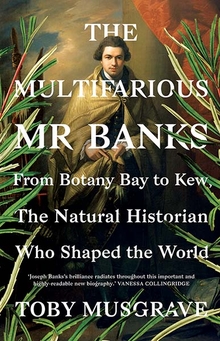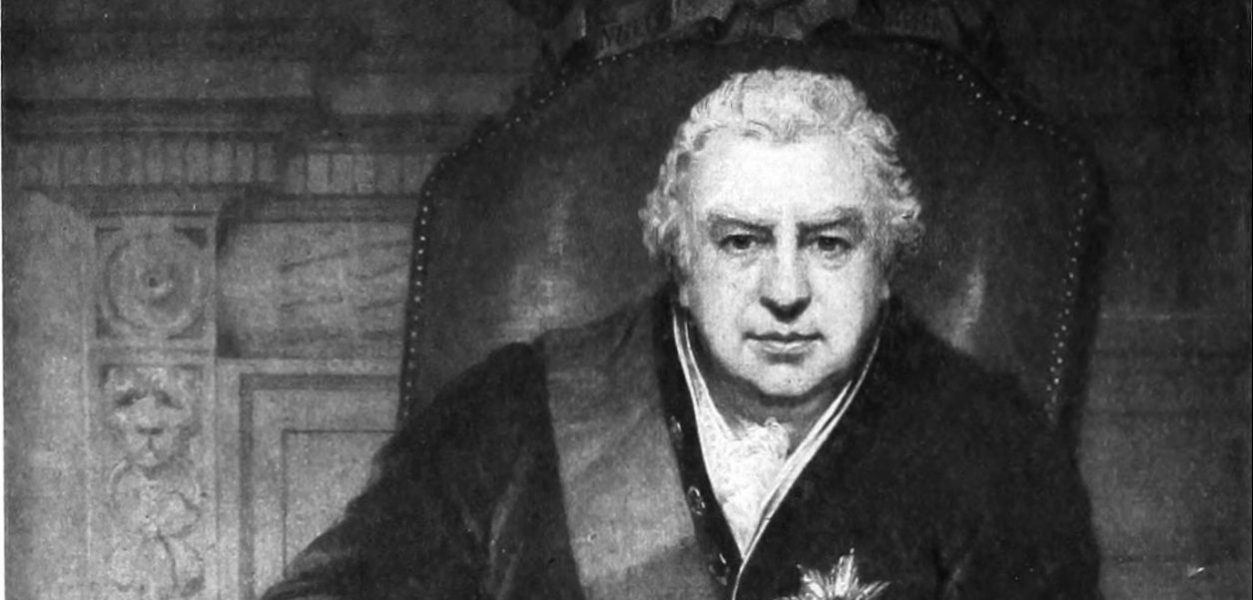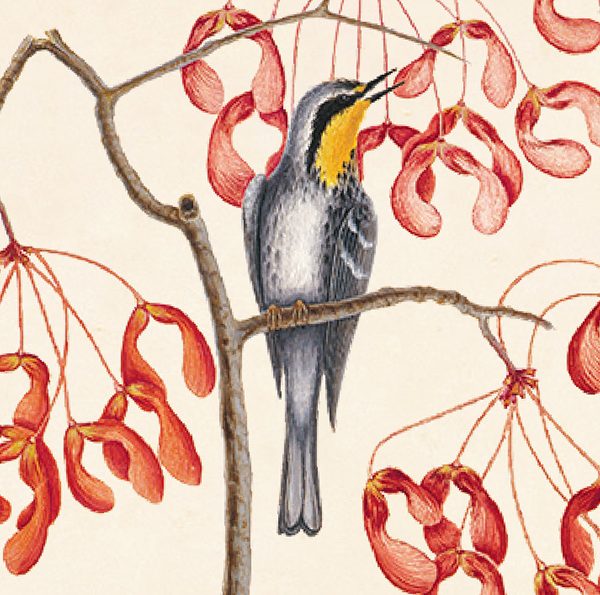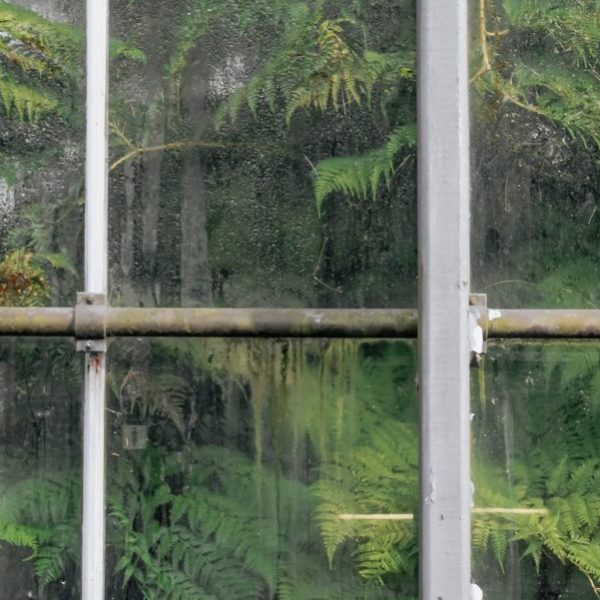The Voyages of Joseph Banks
Toby Musgrave—
As a young man Joseph Banks (he was knighted at the age of thirty-eight on 23 March 1781) undertook three voyages of scientific discovery. With his first, to Newfoundland and Labrador in 1776, he established a paradigm for the study of natural history as an integral component of voyages of exploration. In his determination to pursue the research opportunities offered by an expedition to Tahiti, organized jointly by the Royal Society and the Royal Navy, in order to observe the transit of Venus, Banks personally paid a huge sum for himself and his team to join Lieutenant James Cook aboard HMS Endeavour in what transpired to be a three-year circumnavigation (1768–71) and what Banks considered one of the highlights of his long life. And he again applied the paradigm on his last trip, to the Western Isles of Scotland and Iceland in 1772. Later in life a shore-bound Banks actively promoted and advised the scientific component of, among others, the Vancouver Expedition to the northwest coast of America (1791–5) and Matthew Flinders’s first circumnavigation of Australia (1801–3).
Indeed, a red thread can be drawn directly between Banks’s pioneering paradigm and the hugely influential works of fellow voyaging natural historians in the nineteenth century, including Charles Darwin on the HMS Beagle (1831–6) and Joseph Dalton Hooker on the HMS Erebus (1839–43). The thread continues through the twentieth century with, for example, the British National Antarctic Expedition (1901–4) led by Robert Falcon Scott on the RRS Discovery and into the twenty-first century with the launch of bespoke research vessels, for example, the RRS Sir David Attenborough in 2018.
The Endeavour voyage has iconic status because of its many achievements, not least observing the transit of Venus, the first circumnavigation of New Zealand, and claiming New Holland (Australia) for the British Crown; and because of its influence on subsequent events, not least the European exploration of the Pacific and colonization of its islands and the establishment of the penal colony at Sydney Cove—an act of colonialism for which Banks was primarily responsible and which earned him the sobriquet “father of Australia.”
Throughout its duration, however, the voyage involved a lot of hard work and monotonous daily routine for Banks and his team of eight, including the Swedish scientist Dr. Daniel Solander. While at sea specimens of marine life and birds were collected: either from the deck of the Endeavour by means of nets or shooting birds, or if the weather and the patience of Cook permitted, by Banks rowing about in his little boat. The specimens were recorded (dissected, drawn, and notes taken) and either preserved or often eaten. Landfall brought the opportunity to collect plants, which were drawn and processed into herbarium sheets. Whatever fauna was unwise enough to come into range was shot, studied, and also often ended up on the dining table. Later, in a letter to Johan Alströmer in 1784 recalling Solander’s life, Banks described their daily routine:
We often disagreed with each other’s opinion of many things; but these disputes ended, as they had started, good humoredly. Generally once the other person’s position was understood, agreement was reached. We had with us a large assortment of books on the natural history of the Indies. Seldom was a storm strong enough to disrupt our usual study time, which lasted approximately from 8 A. M. until 2 P. M. daily. After the cabin had lost the odor of food, from 4 or 5 P. M. until dark, we sat at the great table with the draftsman directly across from us. We showed him how the drawings should be depicted and hurriedly made descriptions of all the natural history objects while they were still fresh. When a long journey from land had exhausted fresh things, we finished each description and added the synonyms to the books we had. These completed accounts were immediately entered by a secretary in the books in the form of flora of each of the lands we had visited. Before we arrived home, the florulae of Madeira, Brazil, Tierra del Fuego, the islands of the South Sea, and New Zealand were finished and in the presses.
The cabin was in fact the Great Cabin at the stern of the ship. About thirty-three square meters in area, it was usually the sole preserve of the Master of the vessel, but on this voyage Cook not only shared his work space with Banks but also provided him with a tiny cabin off the room. It says much for the character of both men that they were able to work together so amicably and effectively in such cramped conditions.
Banks kept a voyage journal (the original is available to view online here with a text version here), and what has survived of his specimens is housed in the Natural History Museum, London. However, upon his return Banks was delinquent in writing up and publishing his findings. Indeed it was not until between 1980 and 1990 that the first complete full-color edition of his Florilegium of 743 botanical illustrations (printed from the original copper plates) was published in thirty-four parts by Alecto Historical Editions and the Natural History Museum.
Banks was a true natural historian of his time in the broadest sense, but botany was his passion. With his voyaging days over, one of the many roles that filled his busy life (his London residence at 34 Soho Square housed his personal “scientific institute” of collections, library, and assistants) was as unofficial director of what is today the Royal Botanic Gardens, Kew. Then a private garden belonging to King George III, Banks established the collection along scientific lines, organized numerous plant hunting expeditions the world over that furthered the understanding of botany and bestowed upon Kew (and the king) the world’s finest living plant collection, and developed Kew as the hub for the Banksian policy of economic plant transfer and exchange between British colonies.
The latter opens a window on Banks’s personal Enlightenment view of improvement: that through the application of human ingenuity, political necessity, and moral authority, the human condition and social conditions could be bettered. He also applied this belief, controversial as it is today, to colonization, holding that these distant territories should become useful and yield commodities for the profit of the motherland. Banks was instrumental in unlocking the economic potential of colonial soils through commodity plant transfers and agricultural improvement. But he did not condone the “civilizing process” of newly subjugated indigenous peoples that became synonymous with colonial improvement. And he held abolitionist views, although by arranging the transfer of breadfruit trees from Tahiti to the West Indies as a foodstuff for slave workers, he proactively assisted slave-owners. Incidentally, the first attempt at the transfer resulted in the infamous mutiny on the Bounty (1789).
In a way that Cook has not, Banks has slipped from the collective consciousness in his native land, although he is better remembered in Australia and New Zealand, and in Iceland, too. Yet he was a pivotal figure of his time, a fascinating and multifarious character, and the echoes of his life’s work continue to be felt today.
Dr. Toby Musgrave is a plants and gardens historian, independent scholar, and consultant. He is the author or coauthor of ten books, including The Plant Hunters, An Empire of Plants, The Head Gardeners, Paradise Gardens, Green Escapes and Heritage Fruits and Vegetables.
Further Reading:



























